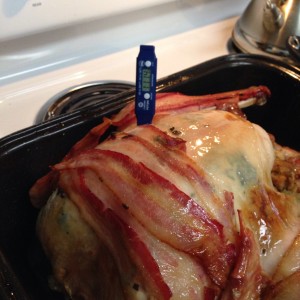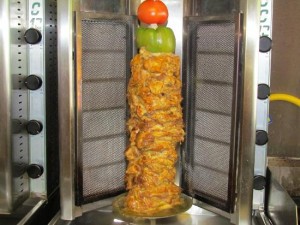Lots of folks like to say that food safety in the home is simple. It isn’t. There are a lot of variables and messages have historically been distilled down to a sanitized sound bite. Saying that managing food safety risks is simple isn’t good communication; isn’t true; and, does a disservice to the nerds who want to know more. The nerds that are increasingly populating the Internet as they ask bigger, deeper questions.
Friend of barfblog, and Food Safety Talk podcast co-host extraordinaire, Don Schaffner provides a microbiological catch-phrase that gets used on almost every episode of our show to combat the food-safety-is-simple mantra; when asked about whether something is safe, Don often answers with, ‘it depends’ and ‘it’s complicated’. And then engages around the uncertainties.
Beth Skwarecki of Life Hacker’s Vitals blog called last week to talk about Thanksgiving dinner, turkey preparation and food safety and provided the platform to get into the ‘it depends’ and ‘it’s complicated’ discussion. Right down to time/temperature combinations equivalent to 165F when it comes to Salmonella destruction.
Here are some excerpts.
How Do You Tell When the Turkey Is Done?
With a thermometer, of course. The color of the meat or juices tells you nothing about doneness, as this guide explains: juices may run pink or clear depending on how stressed the animal was at the time of slaughter (which changes the pH of the meat). The color of the bone depends on the age of the bird at slaughter. And pink meat can depend on roasting conditions or, again, the age of the bird. It’s possible to have pink juices, meat, or bones even when the bird is cooked, or clear juices even when it’s not done yet.
So you’ve got your thermometer. What temperature are you targeting? Old advice was to cook the turkey to 180 degrees Fahrenheit, but that was a recommendation based partly on what texture people liked in their meat, Chapman says. The guidelines were later revised to recommend a minimum safe temperature, regardless of what the meat tastes like, and that temperature is 165. You can cook it hotter, if you like, but that won’t make it any safer.
There’s a way to bend this rule, though. The magic 165 is the temperature that kills Salmonella and friends instantly, but you can also kill the same bacteria by holding the meat at a lower temperature, for a longer time. For example, you can cook your turkey to just 150 degrees, as long as you ensure that it stays at 150 (or higher) for five minutes, something you can verify with a high-tech thermometer like an iGrill. This high-tech thermometer stays in your turkey while it cooks, and sends data to your smartphone. Compare its readings to these time-temperature charts for poultry to make sure your turkey is safe.








